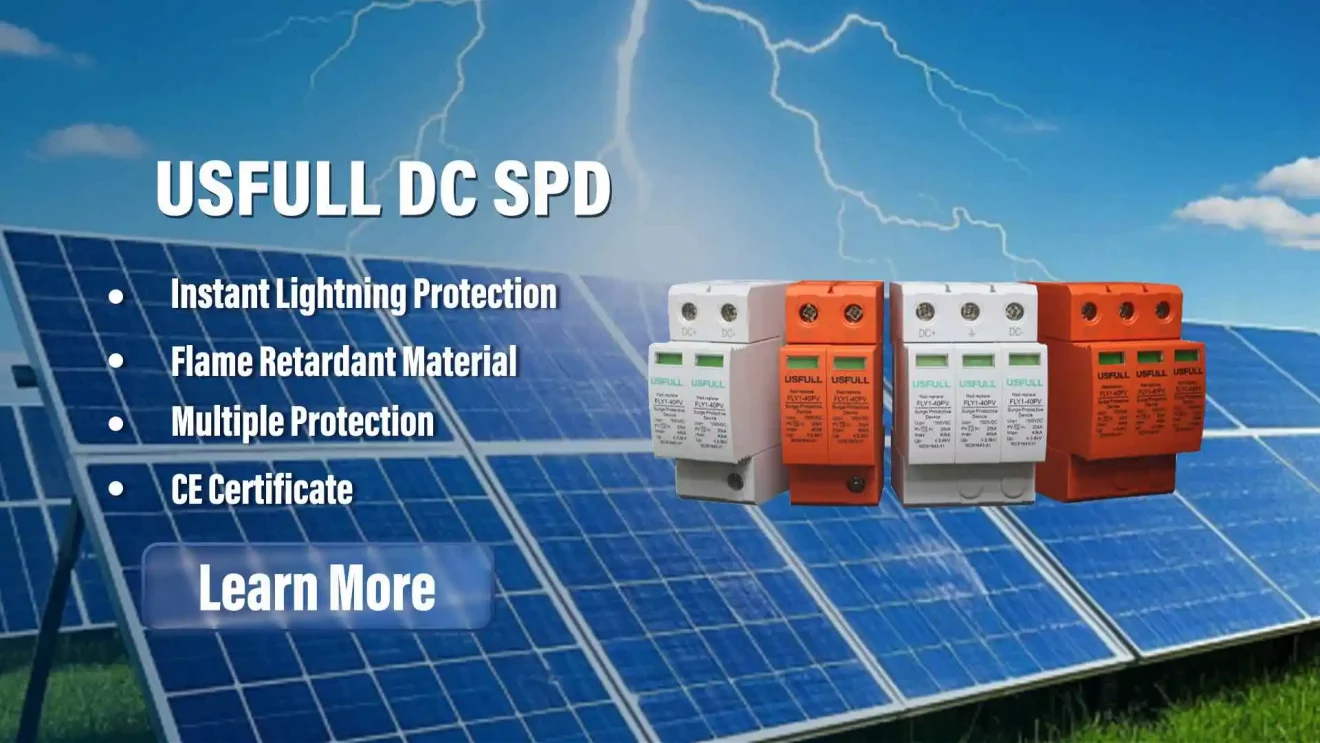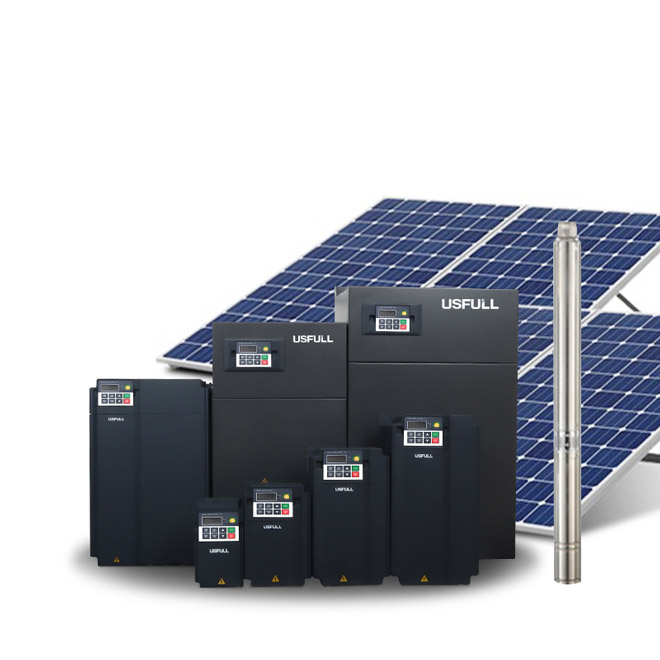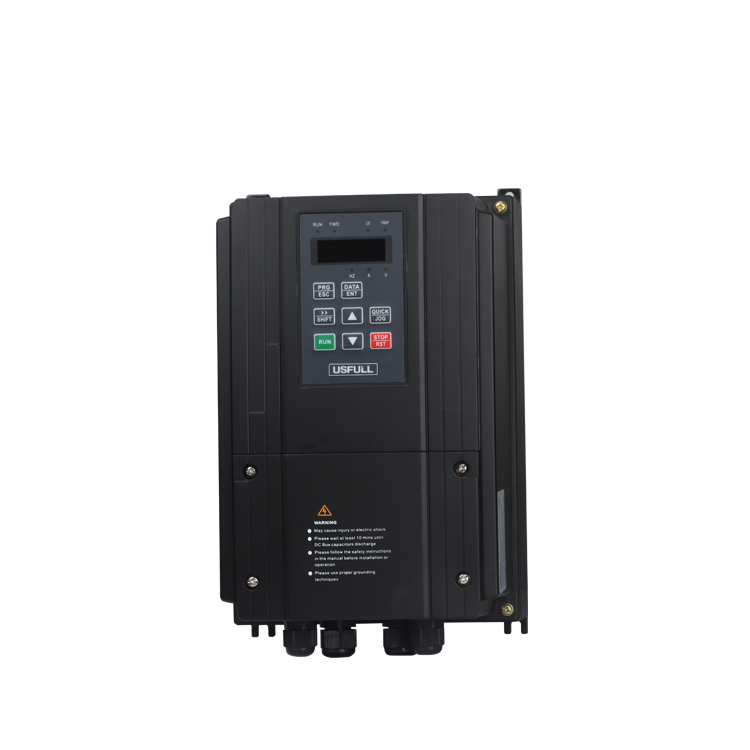Power surges can destroy electrical equipment, causing costly downtime and damage. Without protection, businesses risk losing critical systems. The solution? A surge protective device (SPD), designed to prevent electrical surges from harming your equipment.
A surge protective device (SPD) is an essential electrical safeguard that limits transient voltage and diverts surge currents to protect connected systems from damage.
Understanding how SPDs work helps ensure the longevity and reliability of electrical systems. Let’s explore their functionality, types, and key features.
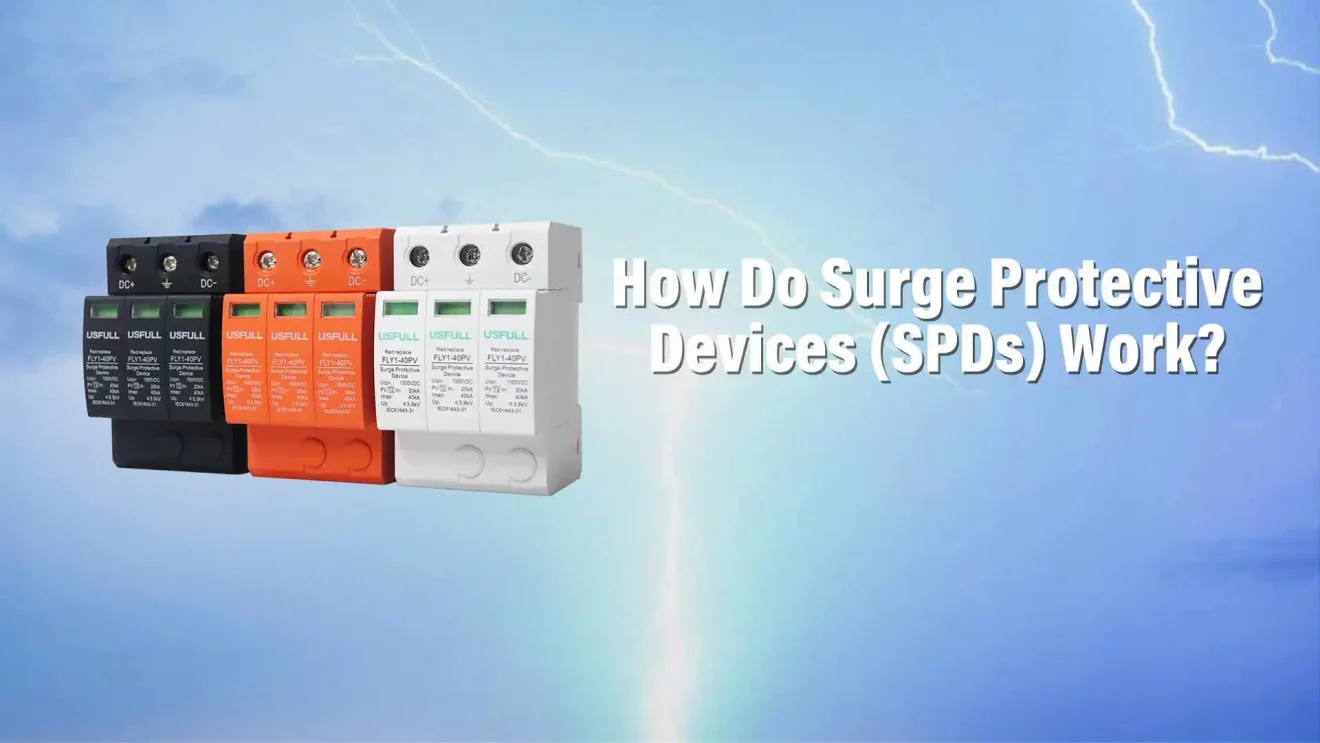
What Are SPDs?
A surge protective device (SPD) is an electrical component designed to protect equipment by limiting transient overvoltages and redirecting excess energy to the ground or back to its source. Electrical surges originate from external events like lightning or internal causes such as switching operations in electrical systems.
SPDs are critical for industrial, commercial, and residential applications, preventing equipment failure, costly repairs, and system downtime. Without an SPD, sensitive electronics, PV systems, and solar power setups are vulnerable to voltage spikes.
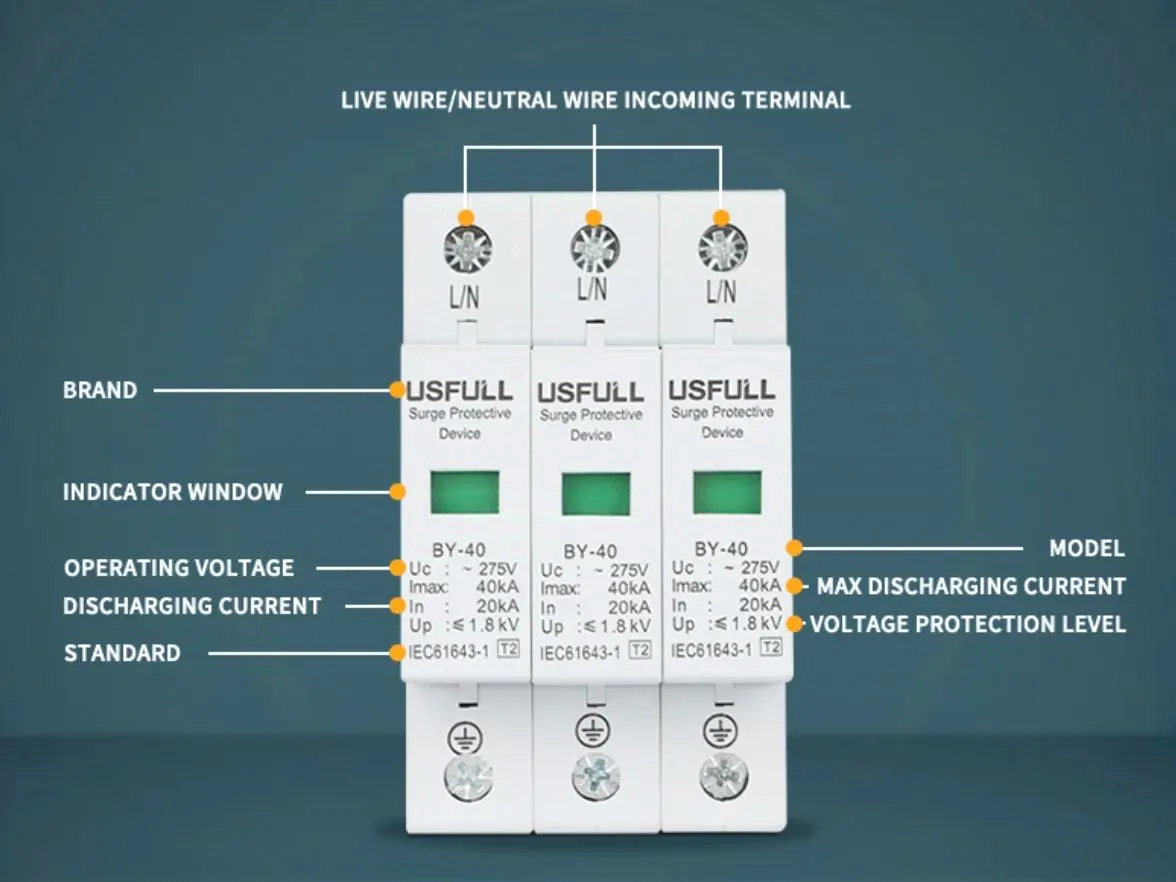
How Does an SPD Work?
SPDs function by monitoring voltage levels and responding instantly to surges. They consist of non-linear components that switch between high and low impedance states based on voltage fluctuations.
Normal Conditions: The SPD remains in a high-impedance state, allowing normal electrical flow without interference.
Surge Event: When a voltage spike occurs, the SPD quickly shifts to a low-impedance state, redirecting excess current to the ground or back to its source.
Reset Process: After the surge is diverted, the SPD automatically returns to a high-impedance state, ensuring normal operation resumes.
This clamping mechanism prevents damage to sensitive equipment, making SPDs essential in DC electrical systems, photovoltaic (PV) installations, and solar power setups.
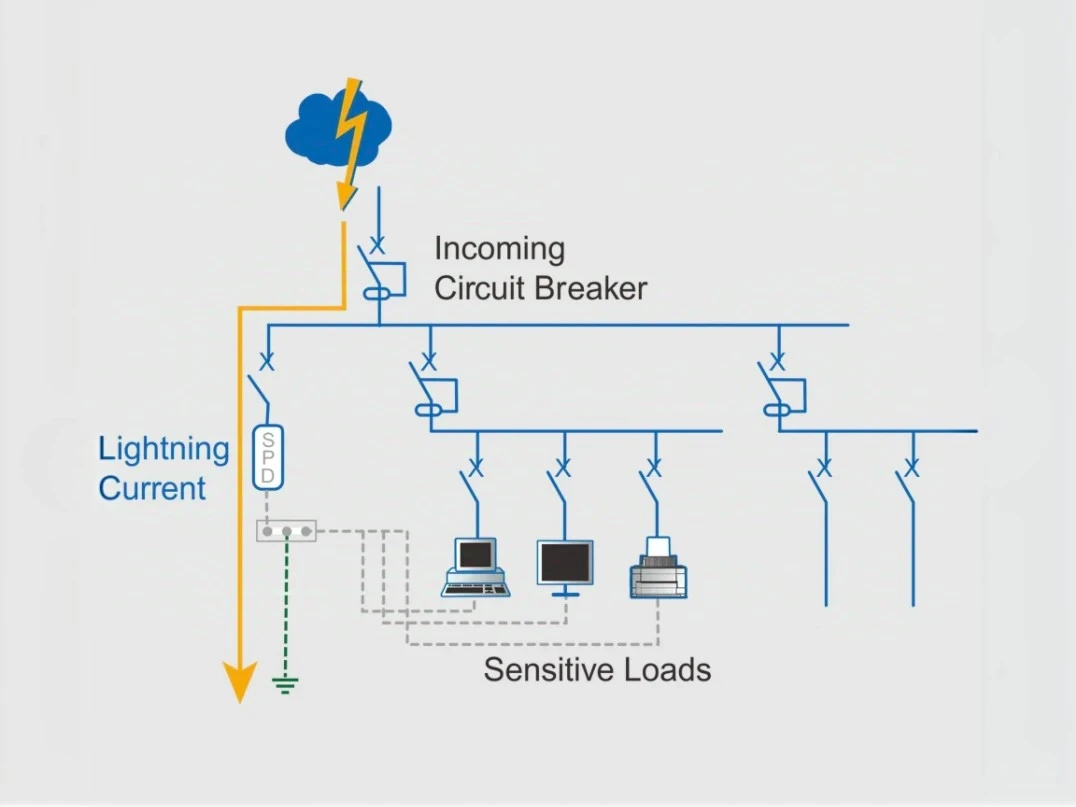
SPD Categories or Types
SPDs are classified into two main types: voltage limiting and voltage switching components. Most modern SPDs use a hybrid approach that combines both methods.
1. Voltage Limiting Components
These components adjust their impedance based on voltage levels, clamping surges before they can reach dangerous levels. Examples include:
Metal Oxide Varistors (MOVs) – Common in solar surge protectors and DC SPDs.
Transient Voltage Suppression (TVS) Diodes – Offer fast response times but are limited in surge-handling capacity.
2. Voltage Switching Components
These components remain non-conductive until a specific voltage threshold is exceeded, at which point they rapidly turn on and conduct the surge to ground. Examples include:
Gas Discharge Tubes (GDTs) – Used in high-energy surge protection applications.
Spark Gaps – Provide reliable DC surge and lightning protection.
Hybrid designs balance the advantages of both component types, offering efficient and reliable surge protection.
How to Compare Different SPDs?
To evaluate different SPDs, consider the following performance factors:
1. Response Time
The speed at which an SPD reacts to a surge is critical.
TVS diodes have the fastest response times.
MOVs offer a good balance of speed and durability.
2. Follow-On Current
Follow-on current occurs when a voltage-switching SPD fails to return to its high-impedance state after a surge.
AC systems handle this naturally due to zero crossings in the AC waveform.
DC systems, such as solar power setups, require specialized DC surge protector devices.
3. Let-Through Voltage
This is the voltage that reaches connected equipment during a surge.
TVS diodes provide the lowest let-through voltage.
MOVs offer moderate protection while balancing other performance factors.
Each type has trade-offs, making hybrid SPDs the preferred choice for most applications.
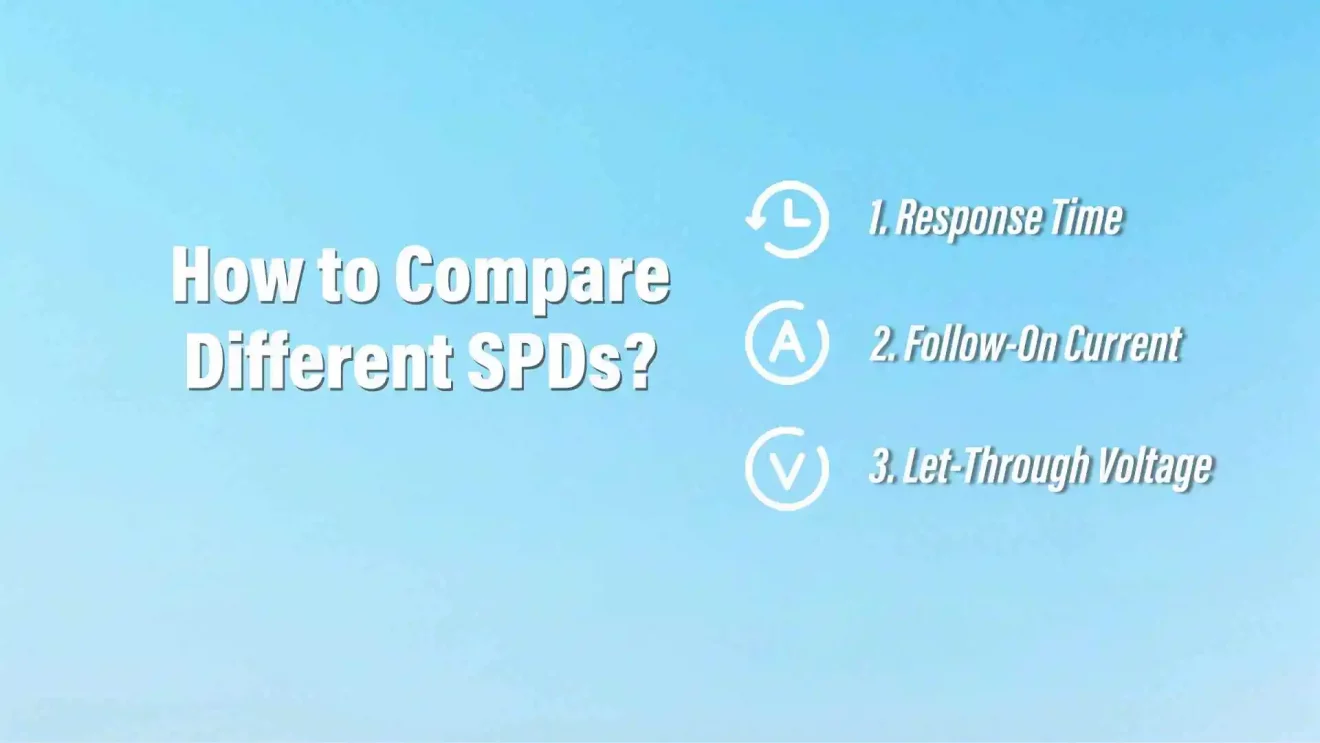
Surge Protective Device Performance Features to Know
When selecting an SPD, key performance metrics ensure reliability and compatibility with electrical systems:
- Maximum Continuous Operating Voltage (MCOV)
The highest voltage the SPD can withstand while functioning normally.
Typically 25% higher than the nominal system voltage.
- Voltage Protection Rating (VPR) or Voltage Protection Level (Up)
Indicates the let-through voltage during a surge.
Lower values indicate better protection.
- Nominal Discharge Current (In) Ratin
Measures the SPD’s ability to withstand repeated surge events.
Higher values indicate greater durability.
- Indication Status
Visual or remote indicators show the SPD’s operational status.
Can be mechanical, LED-based, or remotely monitored.
- Surge Current Capacity
Represents the maximum surge energy the SPD can handle.
Not standardized, so specifications vary by manufacturer.
A properly rated PV SPD or solar surge protector ensures long-term protection for solar power and electrical systems.

